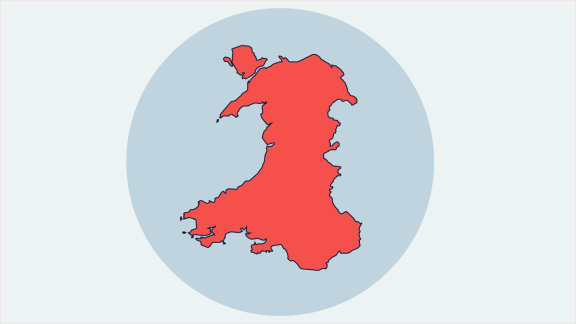How is primary care structured in Wales?

Primary care in Wales is designed to be the first point of contact for healthcare and works through a network of interconnected service and is shaped by the overarching vision of A Healthier Wales, the Welsh Government's plan for health and social care.
How does A Healthier Wales influence primary care?
A Healthier Wales is the Welsh Government's long-term plan for health and social care, which significantly influences primary care by setting the overarching strategic direction. There are several ways A Healthier Wales influences primary care, including:
- Primary Care Model for Wales (PCMW): The Primary Care Model for Wales (PCMW) outlines a comprehensive, place-based approach to delivering sustainable and accessible primary and community healthcare. It emphasises care closer to home and collaborative multi-professional teams, aligning with the vision of a healthier Wales.
- Strategic Programme for Primary Care (SPPC): This programme coordinates the implementation of the Primary Care Model, directly working to operationalise the aims of A Healthier Wales within primary care settings through various workstreams like prevention, digital technology and workforce development.
- Focus on wellbeing and prevention: A Healthier Wales strongly advocates for a move beyond treating illness to proactively promoting health and wellbeing. This shapes how primary care services are designed and delivered, with a greater focus on early intervention and prevention.
- Foster integration: The integration of primary care with social care, community services and the third sector to provide more holistic and coordinated care is promoted within A Healthier Wales.
In essence, A Healthier Wales provides the guiding principles and strategic framework that shapes the delivery, structure and policy of primary care in NHS Wales, moving it towards a more integrated and community-centred model.
What is the Primary Care Model for Wales?
The Primary Care Model for Wales (PCMW) is a system-wide approach to providing sustainable and accessible local health and wellbeing care. It emphasises place-based care, care closer to home and multi-professional teams to deliver care locally, both now and in the future, as part of a broader effort to improve health in Wales.
How is the Primary Care Model for Wales delivered?
The PCMW is delivered through a multi-faceted approach:
- Local health boards (LHBs)
- Primary care clusters
- Multi-professional teams
- Community engagement
- Digital health and technology
- Workforce development
- Performance management and accountability
The PCMW is delivered through a combination of strategic planning, local implementation, collaborative working, community engagement and ongoing monitoring and evaluation. It is a dynamic process that evolves over time to meet the changing needs of the population.
What is the Strategic Programme for Primary Care?
The Strategic Programme for Primary Care is an all-Wales, health board-led programme. Working with the Welsh Government, the programme aims to rapidly consolidate and advance previous primary care strategies and reviews. The programme is made up of six streams and addresses priorities within A Healthier Wales by encouraging collaboration among health, social care and wellbeing providers, LHBs and other stakeholders to share successful local initiatives and solutions for nationwide implementation.
How is the Strategic Programme for Primary Care delivered?
The programme is delivered through six streams:
- Prevention and Wellbeing: This stream focuses on promoting health and wellbeing, preventing illness and reducing health inequalities.
- 24/7 Model: This stream aims to improve access to primary care services around the clock.
- Data and Digital Technology: This stream focuses on using data and digital technology to improve primary care.
- Workforce and Organisational Development: This stream aims to ensure that the primary care workforce has the skills and capacity to deliver high-quality care.
- Communication and Engagement: This stream focuses on improving communication and engagement with patients, communities and stakeholders.
- Transformation and the Vision for Clusters: This stream aims to support the ongoing development and transformation of primary care clusters.
How can primary care reduce health inequalities?
Primary care's contribution extends beyond individual patient interactions. As an anchor institution, primary care influences health through its local economic and social impact, acting as a major employer and service provider.
High-quality, preventive services focused on early intervention and equitable health outcomes are central to its mission. By forging partnerships and advocating for community wellbeing, primary care strengthens public health efforts. Population health management, which utilises data to identify high-risk groups and provide targeted interventions, is another critical component. Proactive care, leveraging linked data to personalise interventions and reduce avoidable illnesses, further enhances its effectiveness in reducing health inequalities.
What role does primary care play in reducing health inequalities?
Primary care plays a crucial role in reducing health inequalities through several key areas:
- Improving access: Ensuring healthcare services reach everyone for early detection and treatment of illnesses.
- Preventive care: Providing vaccinations, screenings and health education to prevent diseases before they worsen.
- Managing chronic conditions: Supporting patients with conditions like diabetes and hypertension through regular check-ups and personalised care.
- Community engagement: Working with local organisations to address social factors that impact health, such as housing and employment.
- Education & training: Equipping healthcare professionals with the skills to address health disparities and provide culturally competent care.
- Strategic programmes: The Inequalities and Inclusion Health team within the Primary Care Division of Public Health Wales has created three straightforward tools to help those in or working with primary care integrate and think about equity during their planning processes.
What workforce plans are in place to deliver primary care?
In Wales there are three main workforce plans in place to deliver primary care.
Summary
To conclude, the structure of primary care in NHS Wales is rooted in the Welsh Government's A Healthier Wales plan, which advocates for a whole-system approach emphasising integration, prevention and accessibility closer to home. The Primary Care Model for Wales operationalises this by focusing on demand-led service development, healthy living promotion, community-level planning and coordinated care. The Strategic Programme for Primary Care (SPPC) coordinates the implementation of this model across various workstreams. Furthermore, tackling health inequalities, developing the primary care workforce, embracing digital transformation and fostering integration are all significant policy drivers shaping the structure and future of primary care in NHS Wales.
To understand more about primary care, see our explainer How is primary care provided in Wales?



